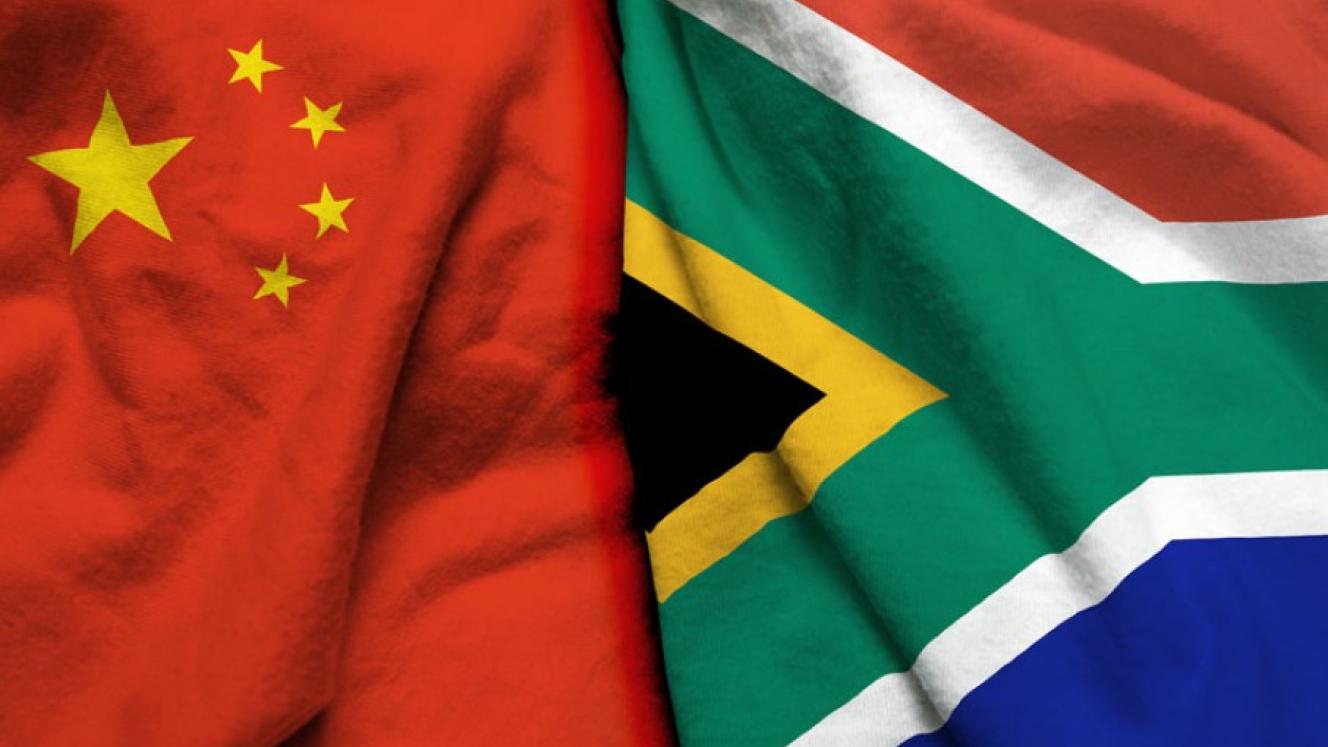China commits to collaborating with SA on zero-tariff initiative – Freightnews.co.za

Report on G20 Summit Outcomes and Alignment with Sustainable Development Goals
G20 Johannesburg Declaration: A Commitment to Global Goals
The G20 Leaders’ Summit in Johannesburg culminated in the adoption of a declaration reinforcing member states’ commitment to the Sustainable Development Goals (SDGs). The summit, themed ‘Solidarity, Equality and Sustainability’, underscored the importance of multilateral cooperation in addressing global challenges. Key commitments outlined in the declaration directly support several SDGs:
- SDG 10 (Reduced Inequalities) & SDG 1 (No Poverty): A primary focus on tackling global inequality and reforming international financial systems to alleviate debt pressures on developing nations.
- SDG 8 (Decent Work and Economic Growth): A pledge to boost inclusive growth, with a strategic emphasis on Africa and the Global South to foster economic development.
- SDG 13 (Climate Action) & SDG 7 (Affordable and Clean Energy): A strong emphasis on climate action and accelerating transitions towards renewable energy sources.
- SDG 16 (Peace, Justice and Strong Institutions) & SDG 17 (Partnerships for the Goals): A commitment to strengthening multilateral cooperation through a rules-based system to advance global peace, sustainability, and development.
Bilateral Partnerships for Sustainable Economic Growth
In a significant move supporting SDG 17 (Partnerships for the Goals), Chinese Premier Li Qiang announced a commitment to collaborate with South Africa on advancing multilateral trade. This partnership includes a key initiative aimed at fostering economic growth and reducing trade barriers.
- Zero-Tariff Initiative: China expressed its readiness to partner with South Africa to implement a zero-tariff policy for South African products. This policy is designed to stimulate economic activity and support SDG 8 (Decent Work and Economic Growth).
- WTO Alignment: Minister of Trade, Industry and Competition, Parks Tau, confirmed that for developing countries, the implementation of this initiative will align with the World Trade Organization’s (WTO) Most Favoured Nation principle, ensuring a fair and rules-based approach consistent with SDG 16.
- Stakeholder Engagement: South Africa will engage with domestic stakeholders, including labour, civil society, and business, to ensure the agreement’s benefits are inclusive and widely distributed.
Challenges and Africa’s Strategic Role in Global Governance
The summit highlighted both challenges to and opportunities for global cooperation. The non-attendance of the United States was noted as a significant point of discussion, underscoring the complexities of achieving universal consensus for SDG 17 (Partnerships for the Goals). Despite this, Minister Tau emphasized that the summit’s outcomes on global trade, WTO reform, and development financing remain critical for the international community.
A compelling takeaway from the proceedings was the increasingly prominent and strategic role of Africa in global trade discussions. The continent’s agenda is now firmly positioned within multilateral platforms, driving conversations on equitable and sustainable development.
Implementation and Monitoring Framework for SDG Alignment
The focus has now shifted from declaration to implementation, with South Africa establishing a framework to ensure the G20 outcomes translate into tangible progress towards the SDGs.
- Translation into Agreements: The primary objective is to ensure the summit’s resolutions are integrated into bilateral agreements and multilateral platforms.
- Progress Tracking: President Cyril Ramaphosa has established two advisory panels to effectively track progress on the commitments made.
- Advancing the Africa Agenda: Discussions are centered on using these mechanisms to follow up on priorities, with a focus on implementing concrete measures that advance the continent’s development goals in alignment with the global SDG framework.
Analysis of SDGs, Targets, and Indicators
1. Which SDGs are addressed or connected to the issues highlighted in the article?
- SDG 10: Reduced Inequalities: The article explicitly mentions the G20 Declaration’s commitment to “tackling global inequality” and focusing on Africa and the Global South. The zero-tariff initiative for South African products is a direct measure to reduce trade inequalities between nations.
- SDG 13: Climate Action: The G20 Johannesburg Leaders’ Declaration is cited as addressing the “climate crisis.” The article highlights commitments to “climate action” and “renewable energy transitions” as key components of the summit’s outcomes.
- SDG 17: Partnerships for the Goals: This is a central theme of the article. The entire discussion revolves around multilateral cooperation at the G20 Leaders’ Summit, international trade negotiations, the China-South Africa partnership, and the importance of a rules-based system under the World Trade Organization (WTO). The article emphasizes “strengthened multilateral cooperation to advance peace, sustainability and development worldwide.”
- SDG 8: Decent Work and Economic Growth: The focus on international trade, a zero-tariff regime, and “boosting inclusive growth” directly relates to fostering economic development. The article discusses measures like the zero-tariff policy which are designed to increase exports and stimulate economic activity in developing countries like South Africa.
2. What specific targets under those SDGs can be identified based on the article’s content?
- Target 10.a: Implement the principle of special and differential treatment for developing countries, in particular least developed countries, in accordance with World Trade Organization agreements. This is directly addressed by China’s zero-tariff initiative for South African products, which aligns with the WTO’s Most Favoured Nation principle for developing countries.
- Target 13.2: Integrate climate change measures into national policies, strategies and planning. The G20 Declaration, which commits major economies to climate action and renewable energy transitions, represents an integration of these measures into the multilateral policy agenda.
- Target 17.10: Promote a universal, rules-based, open, non-discriminatory and equitable multilateral trading system under the World Trade Organization. The article explicitly mentions protecting the “multilateral trading system” and the importance of the “World Trade Organization, a rules-based system” as key outcomes of the G20 discussions.
- Target 17.11: Significantly increase the exports of developing countries, in particular with a view to doubling the least developed countries’ share of global exports by 2020. The zero-tariff policy announced by China for South African products is a direct mechanism aimed at increasing the exports of a developing country.
- Target 17.3: Mobilize additional financial resources for developing countries from multiple sources. This is connected to the G20 Declaration’s commitment to “reforming international financial systems to ease debt pressures on developing countries” and addressing “financing for development.”
3. Are there any indicators mentioned or implied in the article that can be used to measure progress towards the identified targets?
- Indicator related to Target 10.a: The “prompt implementation of a zero-tariff policy for South African products” serves as a direct, measurable indicator. Progress can be tracked by monitoring the proportion of South African products entering China with zero tariffs, which relates to the official indicator 10.a.1 (Proportion of tariff lines applied to imports from least developed countries and developing countries with zero-tariff).
- Indicator related to Target 17.10: The successful achievement of “consensus on its own terms” for the G20 Johannesburg Leaders’ Declaration, despite challenges, acts as a qualitative indicator of the functioning of the multilateral system. The ongoing engagement with the WTO is another process-based indicator.
- Indicator related to Target 17 (general): The establishment of “two advisory panels to ensure that we can effectively track progress” is a concrete mechanism for monitoring implementation. The existence and effectiveness of these panels can be used as an indicator of the commitment to follow up on the G20 outcomes and multilateral agreements.
SDGs, Targets, and Indicators Table
| SDGs | Targets | Indicators |
|---|---|---|
| SDG 10: Reduced Inequalities | 10.a: Implement the principle of special and differential treatment for developing countries… in accordance with World Trade Organization agreements. | The implementation of a zero-tariff policy for South African products by China. |
| SDG 13: Climate Action | 13.2: Integrate climate change measures into national policies, strategies and planning. | The adoption of the G20 Johannesburg Leaders’ Declaration committing major economies to climate action and renewable energy transitions. |
| SDG 17: Partnerships for the Goals |
17.10: Promote a universal, rules-based, open, non-discriminatory and equitable multilateral trading system under the World Trade Organization.
17.11: Significantly increase the exports of developing countries. 17.3: Mobilize additional financial resources for developing countries from multiple sources. |
Achieving consensus on the G20 Declaration; Active engagement in the WTO.
The agreement and implementation of the zero-tariff regime between China and South Africa. The establishment of two advisory panels by the President to track progress on G20 outcomes, including financing for development. |
| SDG 8: Decent Work and Economic Growth | (Implied) Fostering inclusive growth through international trade. | Bilateral agreements (like the China-SA zero-tariff initiative) aimed at boosting trade and economic growth. |
Source: freightnews.co.za
What is Your Reaction?
 Like
0
Like
0
 Dislike
0
Dislike
0
 Love
0
Love
0
 Funny
0
Funny
0
 Angry
0
Angry
0
 Sad
0
Sad
0
 Wow
0
Wow
0




















































.jpg.webp?itok=0ZsAnae9#)


























